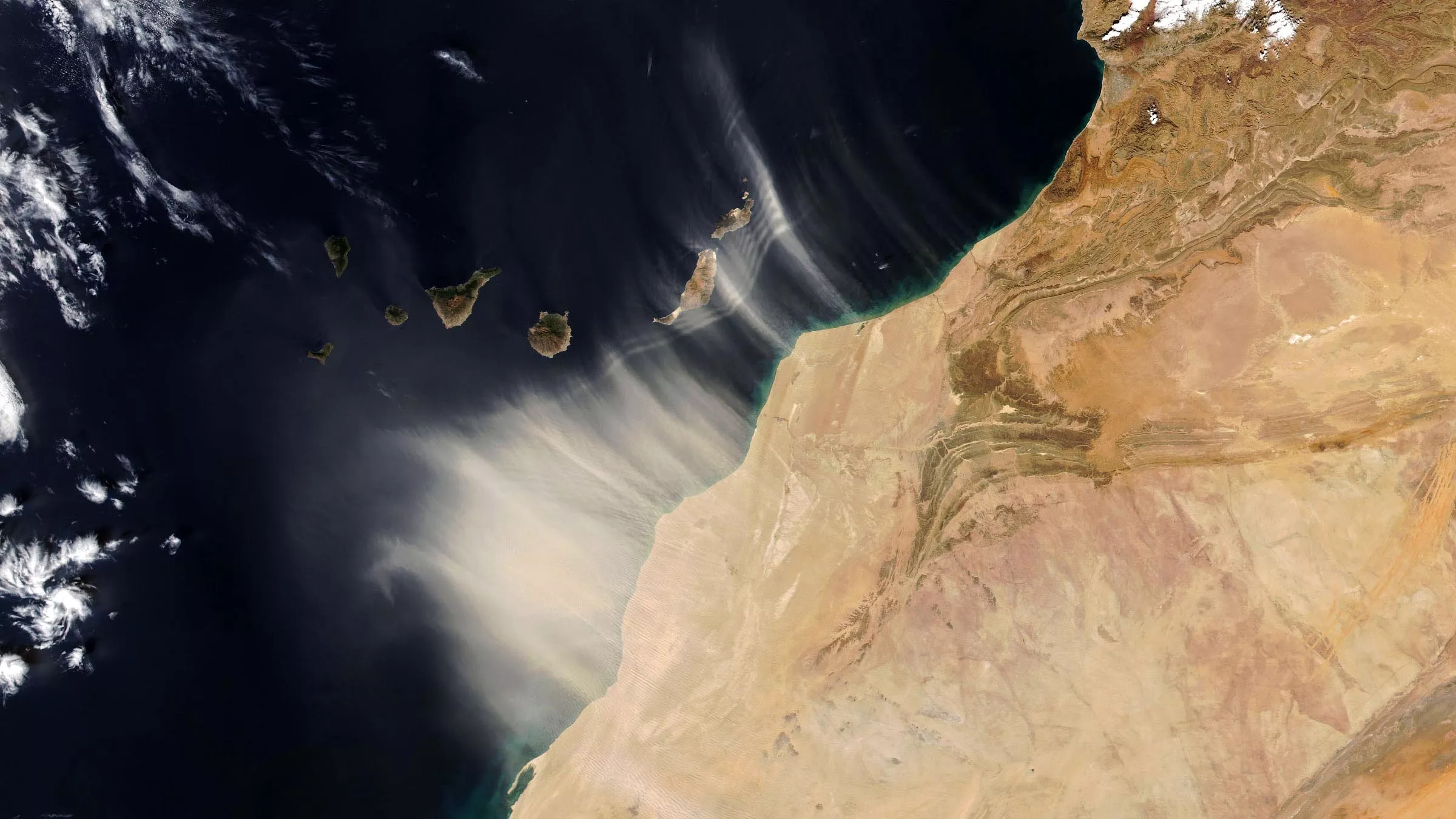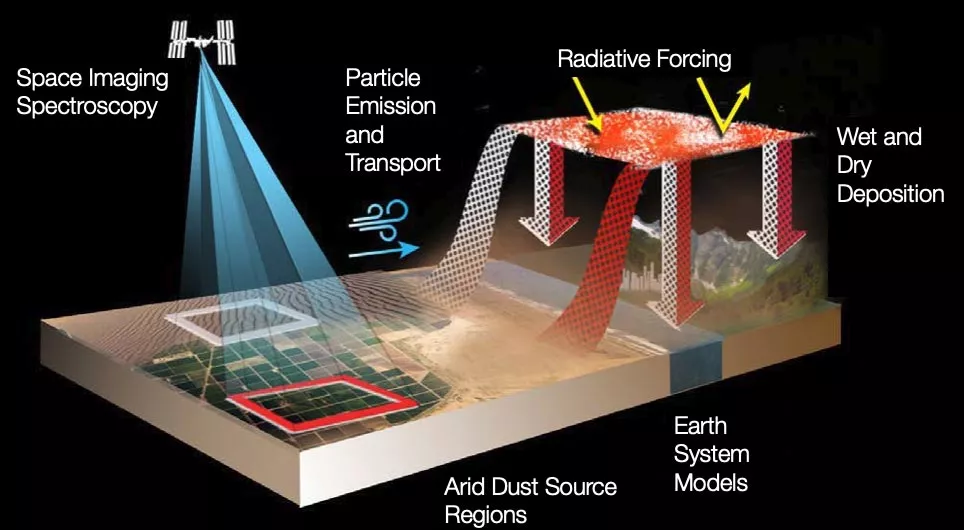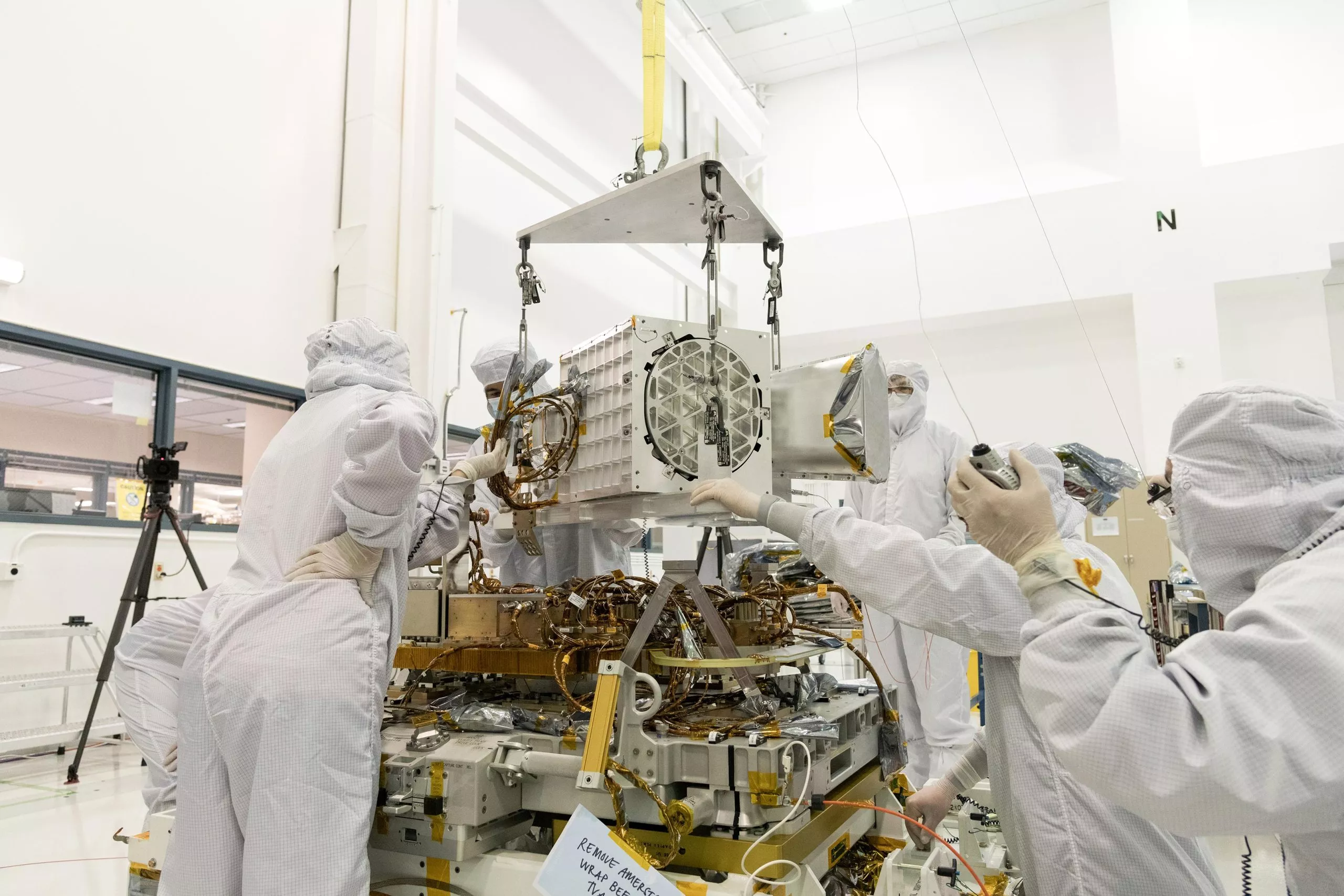The dust is blown across the land and sea by the wind, which not only obscures the sky and congests the lungs, but also leaves a film on the windshield. In addition, it is called mineral dust or sand dust. It can affect the weather, accelerate snow melting and fertilize plants on land and sea.

Particles from North Africa can travel thousands of miles around the world, trigger phytoplankton blooms, nourish the Amazon rainforest, and cover some American cities with a veil of gravel while absorbing and scattering sunlight.
NASA's earth surface mineral dust source survey (EMIT) mission will be launched in June 2022. The mission aims to deepen researchers' understanding of these fine particles of soil, silt and clay from Earth's deserts and ultimately how they affect the climate of our planet.
It is understood that darker, iron rich dust will absorb the heat of the sun, thus warming the surrounding air, while lighter, clay rich particles play the opposite role. "Different types of dust have different properties - they are acidic, they are alkaline, they are light, they are dark - which determine how particles interact with the earth's atmosphere, land, water and organisms," said Robert O. green, a leading researcher from emit and a long-term researcher at NASA's Jet Propulsion Laboratory in Southern California. In addition, he added that with the data from emit, they will be on the track of mapping the dust source areas of the world and understanding how the dust heats and cools the earth and possible changes in future climate conditions.
Researchers at NASA and elsewhere have long focused on the flight of dust - a journey that can take hours or weeks, depending on the particle size. Its impact on the atmosphere is included in the climate model, but it is still unclear whether dust has a net warming or cooling effect on the earth - and how this changes over time.

Natalie Mahowald, deputy chief investigator of emit and earth system scientist at Cornell University in Ithaca, New York, said that this uncertainty comes from the lack of data on the composition of dust. The researchers' knowledge comes from less than 5000 sampling sites, most of which are in agricultural areas, where detailed soil information can serve agricultural or commercial purposes. Since few crops grow in deserts and dust producing areas in the world are often not adequately sampled, scientists must assume the composition of dust in their computer simulations. It is reported that these simulations combine land, water and air data to simulate climate change.
"Usually in climate models, we simulate dust as yellow -- the average color of all types of dust -- but if you've ever been to a desert area, you know that sand is not all one color. So the assumption that it's unified around the world doesn't reflect the reality," Mahowald said

Map the origin of dust
Emit should improve this situation. From the habitat on the international space station, this state-of-the-art imaging spectrometer will map the world's sources of mineral dust and collect information about particle color and composition when the instrument is operating over dry, vegetated areas.
It is understood that emit will focus on 10 important dust types, including those containing iron oxide, whose dark red hue will lead to strong warming of the atmosphere. Understanding what kind of dust prevails on the surface of each region will provide new information on the composition of particles that are lifted and transported in the air. With this data and information, climate scientists can deepen their understanding of the regional and global climate impacts of mineral dust.

"Dust emissions are highly variable - there are some variations due to changes in wind or rain every second, and there are seasonal, annual and long-term variations. Emit will provide information about the area where the dust comes from, and we will combine it with other atmospheric and climate information to assess changes in emissions, as well as a better understanding of what has happened in the past and what will happen in the future," Mahowald said
Over a billion measurements
EMIST's spectrometer receives sunlight reflected from the earth, divides it into hundreds of different colors, and finally records it on the grid of a light detector. The grid has 1280 columns, each with 480 elements. Each column is actually its own spectrometer, which is responsible for reading the color of an area the size of a football field on the earth's surface. The detector can scan land at a speed of more than 4 mph (4.5 mph).

"At first, scientists worked with a single spectrometer. Now we will effectively fly 1280 spectrometers on the earth's surface, and each spectrometer can collect hundreds of measurements per second," Green said.
Emit will provide more than 1 billion new measurements during its mission. Since each dust type has unique light reflection characteristics, researchers will be able to determine the mineral and chemical composition of surface materials.
The accuracy of these observations will make the emit instrument one of the most complex earth facing imaging spectrometers ever sent into space.
More information about this task
Emits are being developed at NASA's Jet Propulsion Laboratory. It plans to launch from the Kennedy Space Center in Florida to the international space station, which is SpaceX's 25th commercial supply service mission for NASA. Once it is operational, its data will be sent to the NASA land process Distributed Active Archive Center for use by other researchers and the public.